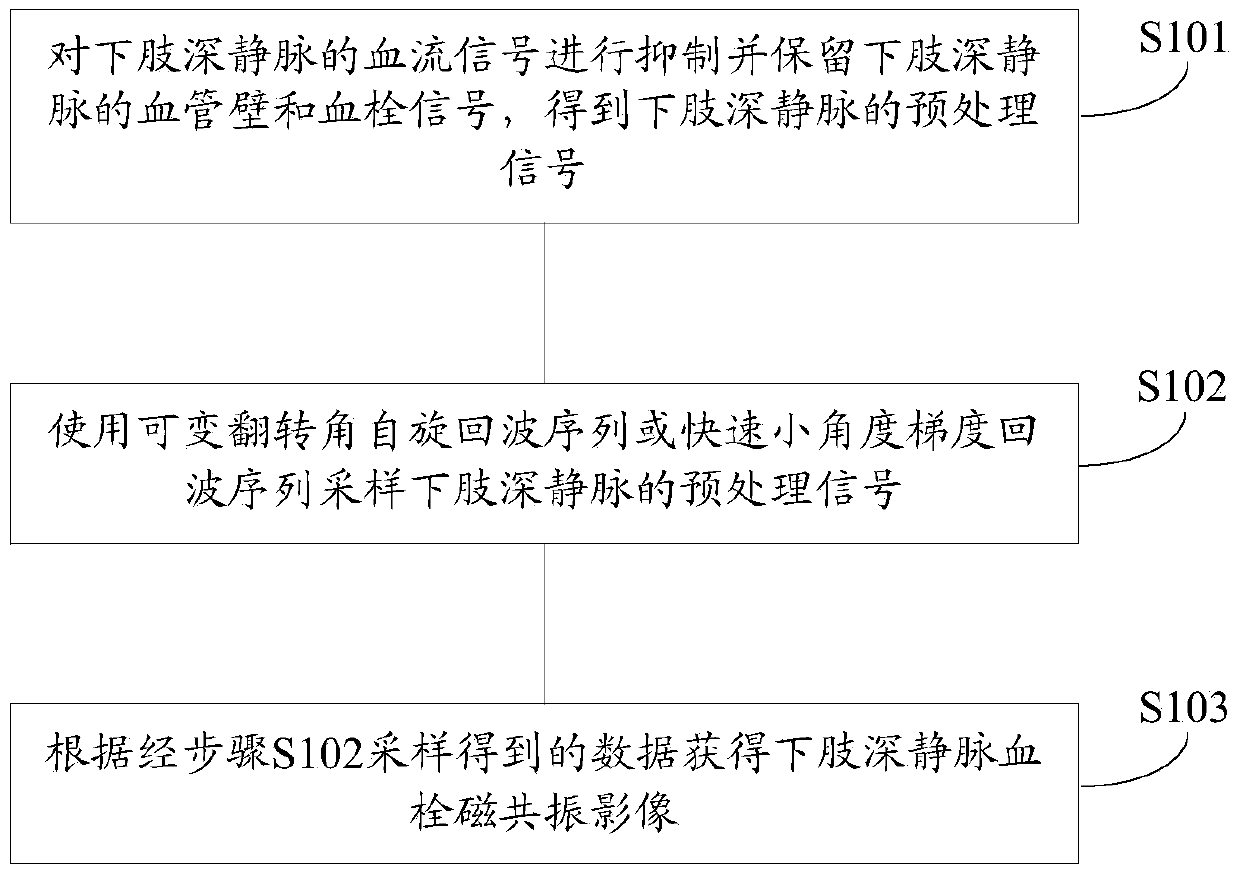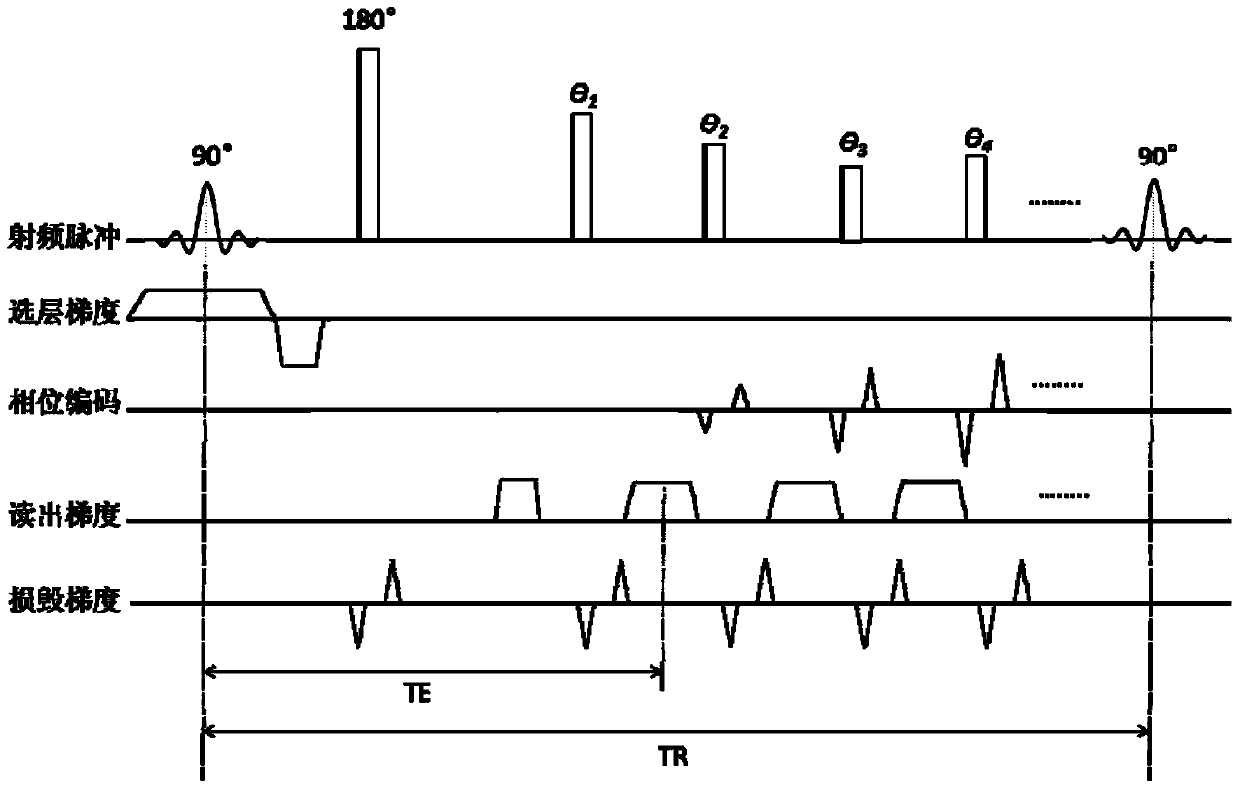A magnetic resonance imaging method and device for deep vein thrombosis of lower extremities
A deep vein thrombosis and magnetic resonance imaging technology, applied in the field of medical imaging, can solve problems such as dependence, blood flow signal contamination of imaging results, and inability to use pregnant women.
- Summary
- Abstract
- Description
- Claims
- Application Information
AI Technical Summary
Problems solved by technology
Method used
Image
Examples
Embodiment Construction
[0026] In order to make the object, technical solution and beneficial effects of the present invention more clear, the present invention will be further described in detail below in conjunction with the accompanying drawings and embodiments. It should be understood that the specific embodiments described here are only used to explain the present invention, not to limit the present invention.
[0027] An embodiment of the present invention provides a magnetic resonance imaging method for deep vein thrombosis of lower extremities, the method comprising: suppressing the blood flow signal of the deep vein of the lower extremity and retaining the vessel wall and thrombus signals of the deep vein of the lower extremity to obtain the deep vein of the lower extremity Preprocessing the signal; sampling the preprocessing signal of the deep vein of the lower extremity by using a variable flip angle spin echo sequence or a fast small-angle gradient echo sequence; obtaining a magnetic reson...
PUM
 Login to View More
Login to View More Abstract
Description
Claims
Application Information
 Login to View More
Login to View More - R&D
- Intellectual Property
- Life Sciences
- Materials
- Tech Scout
- Unparalleled Data Quality
- Higher Quality Content
- 60% Fewer Hallucinations
Browse by: Latest US Patents, China's latest patents, Technical Efficacy Thesaurus, Application Domain, Technology Topic, Popular Technical Reports.
© 2025 PatSnap. All rights reserved.Legal|Privacy policy|Modern Slavery Act Transparency Statement|Sitemap|About US| Contact US: help@patsnap.com



